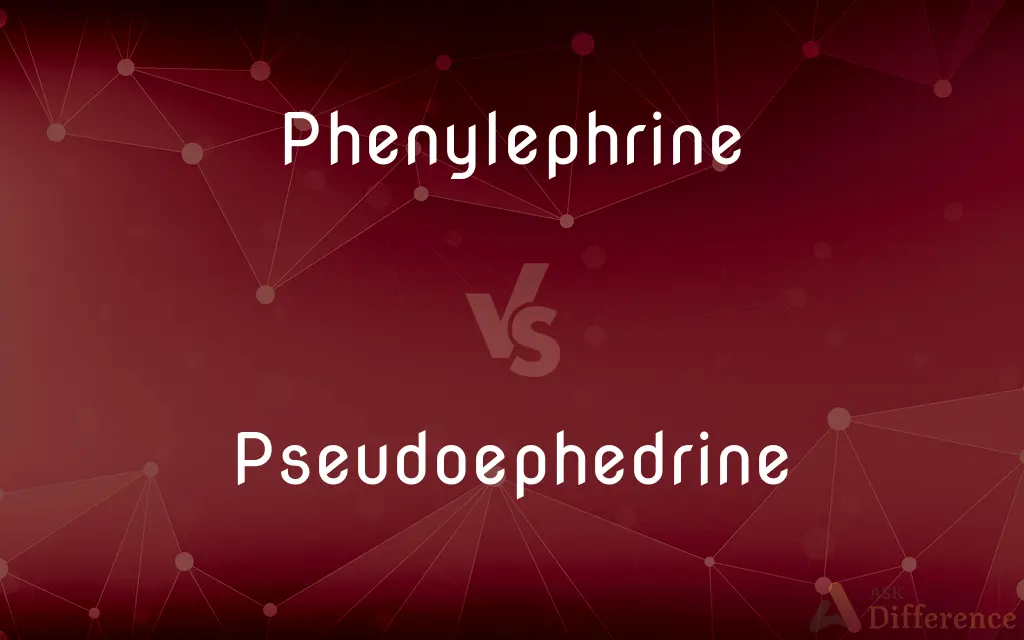Phenylephrine vs. Pseudoephedrine — What's the Difference?

Difference Between Phenylephrine and Pseudoephedrine
ADVERTISEMENT
Compare with Definitions
Phenylephrine
Phenylephrine is a medication primarily used as a decongestant, to dilate the pupil, to increase blood pressure, and to relieve hemorrhoids. When taken orally as a decongestant, it relieves nasal congestion due to colds and hay fever.
Pseudoephedrine
Pseudoephedrine (PSE) is a sympathomimetic drug of the phenethylamine and amphetamine chemical classes. It may be used as a nasal/sinus decongestant, as a stimulant, or as a wakefulness-promoting agent in higher doses.It was first characterized in 1889, by the German chemists Ladenburg and Oelschlägel, who used a sample that had been isolated from Ephedra vulgaris by the Merck pharmaceutical corporation of Darmstadt, Germany.
Phenylephrine
An adrenergic drug, C9H13NO2, that is a powerful vasoconstrictor and is used to relieve nasal congestion, dilate the pupils, and maintain blood pressure during anesthesia.
Pseudoephedrine
An isomer of ephedrine, C10H15NO, used in its hydrochloride or sulfate form as a nasal decongestant.
Phenylephrine
An α-adrenergic receptor agonist related to adrenaline, used as a vasoconstrictor and nasal decongestant; 3-(1-hydroxy-2-methylamino-ethyl)phenol, with the formula C9H13NO2.
ADVERTISEMENT
Pseudoephedrine
(pharmaceutical drug) A sympathomimetic alkaloid commonly used as a decongestant; a chemical compound, an isomer of ephedrine, with the formula C10H15NO.
Phenylephrine
A powerful vasoconstrictor used to dilate the pupils and relieve nasal congestion
Pseudoephedrine
Poisonous crystalline alkaloid occurring with ephedrine and isomorphic with it
Share Your Discovery

Previous Comparison
Corded vs. Cordless
Next Comparison
Unironically vs. Ironically













































